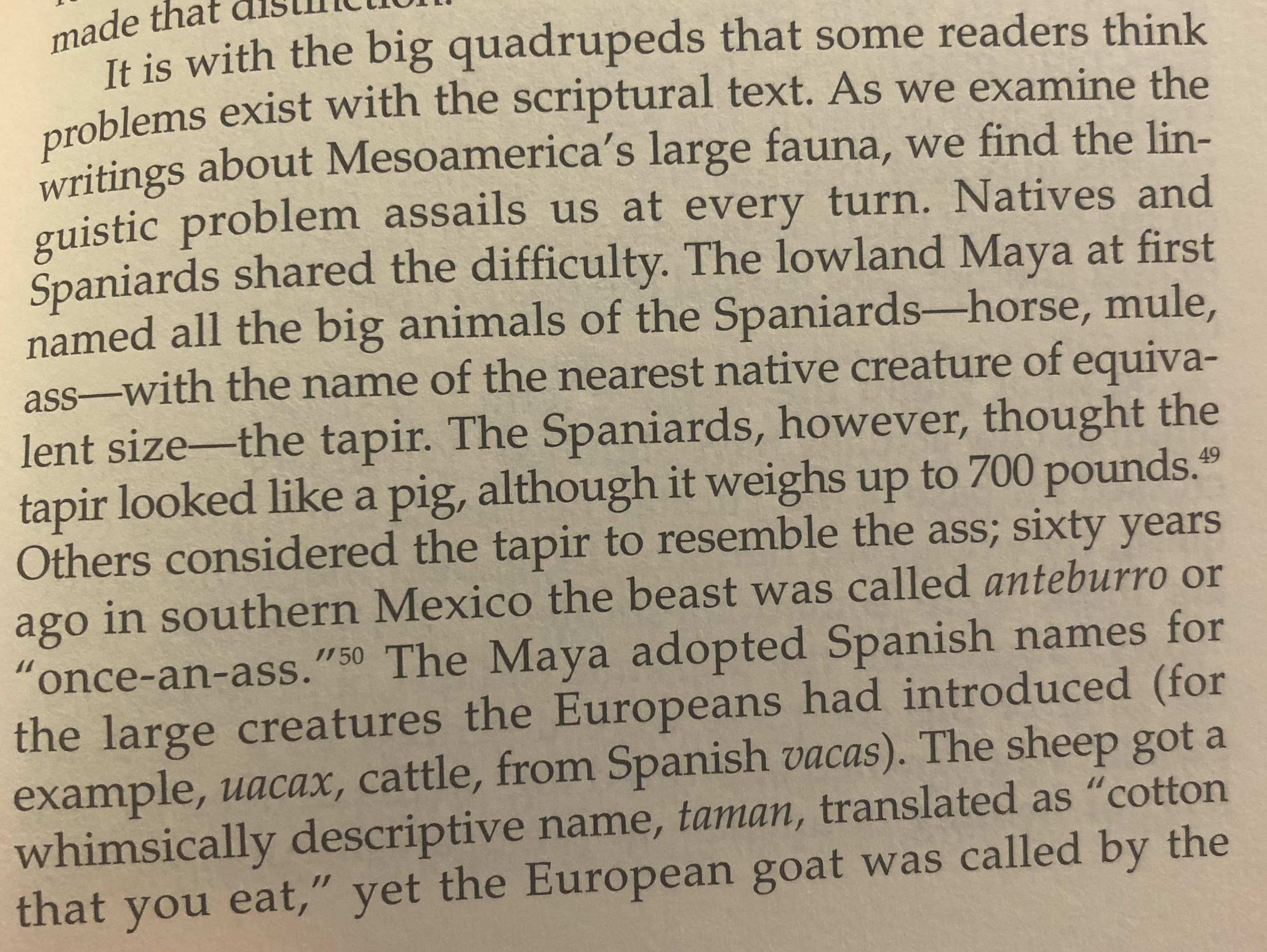John L. Sorenson provides evidence of loan-shifting in Mesoamerica.
- Type
- Book
- Hearsay
- DirectSecondary
- Reference
John L. Sorenson, An Ancient American Setting for the Book of Mormon (Provo, Utah : Foundation for Ancient Research and Mormon Studies, 1985), 293-294.
- Scribe/Publisher
- Foundation for Ancient Research and Mormon Studies
- Audience
- Reading Public
- Transcription
It is with the big quadrupeds that some readers think problems exist with scriptural text. As we examine the writings about Mesoamerica's large fauna, we find the linguistic problem assails us at every turn. Natives and Spaniards shared the difficulty. The lowland Maya at first named all the big animals of the Spaniards—horse, mule, ass—with the name of the nearest native creature of equivalent size—the tapir. The Spaniards, however, thought the tapir looked like a pig, although it weighs up to 700 pounds. Others considered the tapir to resemble the ass; sixty years ago in southern Mexico the beast was called anteburro or "once-an-ass." The Maya adopted Spanish names for the large creatures the Europeans had introduced (for example, uacax, cattle, from Spanish vacas). The sheep got a whimsically descriptive name, taman, translated as "cotton that you eat," yet the European goat was called by the name of the aboriginal short-horned deer. Similar confusion and pragmatism prevailed in North America, where the Miami Indians happened to see European cows before the tribe was pushed far enough west to encounter the bison or buffalo, which they then termed 'wild cow.' The explorer DeSoto called the buffalo simply vaca, cow. Yet the Delaware Indians named the cow after the deer, and the Miami tribe labeled sheep, when they first saw them, 'looks-like-a-cow.' Back in Yucatan, Father Landa noted that the tapir, while the size of a mule, had a hoof like an ox, and he considered the small brocket deer a 'kind of little wild goat.' But isn't it obvious that the "cow" of the Book of mormon was our familiar bovine, straight out without all this hedging? No, it is not at all obvious. First, we are trying to find out what the Book of Mormon really means by the words we have in English translation; we are not trying either to simplify or to complicate the matter, but only to be correct. In the effort to learn the truth, nothing can be assumed obvious. Second, there is a lack of reliable evidence—historical, archaeological, zoological, or linguistic—that Old World cows were present in the Americas in pre-Columbian times. The same is true of some of the other creatures mentioned in the Nephite record, where modern readers may feel that they are already familiar with the animals on the basis of the translated names. In these cases we have to find another way to read the text in order to make sense of it. So what might the Nephite term translated by Joseph Smith as cow actually have signified? When Cortez's party crossed the base of the Yucatan peninsula during their conquest, they observed herds of docile deer that some scholars think were semi-domesticated. Perhaps they were 'cows.'
- Citations in Mormonr Qnas
The B. H. Roberts Foundation is not owned by, operated by, or affiliated with the Church of Jesus Christ of Latter-day Saints.


